#unnao news today
Text
youtube
Unnao News: नेशनल हाईवे किनारे अज्ञात युवक की गला रेत कर हुई निर्मम हत्या-
#up news today#up crime news#up news in hindi#up news in today#up news hindi#up top news of the day#Uttar Pradesh News#Uttar Pradesh Latest News#up latest news#up news#यूपी#यूपी न्यूज़#यूपी लेटेस्ट न्यूज़#यूपी क्राइम न्यूज़#उत्तर प्रदेश न्यूज़#उत्तर प्रदेश लेटेस्ट न्यूज़#unnao#unnao news today#unnao news hindi#unnao news aaj ki#unnao news channel#unnao news video#unnao news#unnao crime news#Youtube
0 notes
Text
Video Shows UP Student Crying Over Fee, BJP's Varun Gandhi Invokes "Humanity"
Video Shows UP Student Crying Over Fee, BJP’s Varun Gandhi Invokes “Humanity”
The girls, Apoorva, said she was disallowed as her father could not come to pay fee.
New Delhi:
Holding government officials and elected representatives “morally responsible”, BJP MP Varun Gandhi today shared the viral video of a girl weeping after she was not permitted to take an exam over non-payment of fee at a private school in UP’s Unnao district.
“The tears of this daughter show the pain…
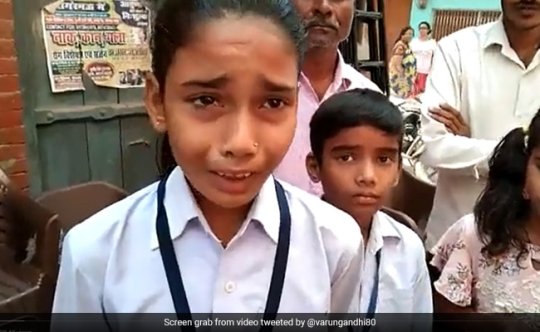
View On WordPress
0 notes
Text
Video Shows UP Student Crying Over Fee, BJP's Varun Gandhi Invokes "Humanity"
Video Shows UP Student Crying Over Fee, BJP’s Varun Gandhi Invokes “Humanity”
The girls, Apoorva, said she was disallowed as her father could not come to pay fee.
New Delhi:
Holding government officials and elected representatives “morally responsible”, BJP MP Varun Gandhi today shared the viral video of a girl weeping after she was not permitted to take an exam over non-payment of fee at a private school in UP’s Unnao district.
“The tears of this daughter show the pain…
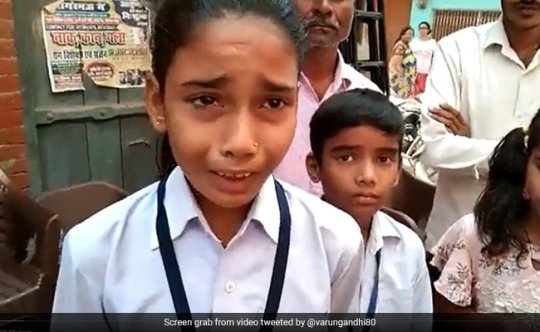
View On WordPress
0 notes
Text
Video Shows UP Student Crying Over Fee, BJP's Varun Gandhi Invokes "Humanity"
Video Shows UP Student Crying Over Fee, BJP’s Varun Gandhi Invokes “Humanity”
The girls, Apoorva, said she was disallowed as her father could not come to pay fee.
New Delhi:
Holding government officials and elected representatives “morally responsible”, BJP MP Varun Gandhi today shared the viral video of a girl weeping after she was not permitted to take an exam over non-payment of fee at a private school in UP’s Unnao district.
“The tears of this daughter show the pain…
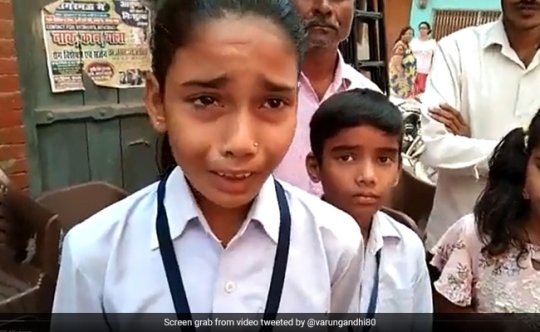
View On WordPress
0 notes
Text
Unnao News Today:60 वर्षीय बुजुर्ग ने रचाई शादी, बेटा बना बराती ; 20 साल से रह रहे थे साथ
Unnao News Today:60 वर्षीय बुजुर्ग ने रचाई शादी, बेटा बना बराती ; 20 साल से रह रहे थे साथ
बुजुर्ग के अनुसार गांव के कुछ लोग उसे बिना शादी साथ रहने का ताने मारते थे। इन तानों से बचने के लिए प्रधान के कहने पर वे दोनों उम्र के इस पड़ाव पर शादी की रस्में निभाने को तैयार हो गए।
यूपी के उन्नाव जिले में गंजमुरादाबाद के ग्राम रसूलपुर रूरी में सोमवार की रात एक अनोखी शादी हुई। 20 वर्षों से साथ रह रहे 60 वर्षीय बुजुर्ग और 55 वर्षीय महिला ने शादी की रस्में निभाईं। दोनों का 13 साल का एक बेटा भी…

View On WordPress
0 notes
Text
Court backs CBI’s clean chit to Sengar in Unnao girl’s car crash | India News - Times of India
Court backs CBI’s clean chit to Sengar in Unnao girl’s car crash | India News – Times of India
NEW DELHI: A Delhi court on Saturday said it had “no hesitation in holding the findings” of the CBI’s final report, which said there was no case against jailed former BJP MLA Kuldeep Singh Sengar to proceed against him for the offence of murder in an accident case, as correct. Currently, Sengar is serving a life sentence for raping a minor girl in Unnao in 2017. The accident case pertains to an…
View On WordPress
#bjp mla kuldeep singh sengar#Breaking news#CBI#Dharmesh Sharma#Google news#India#India news#India news today#ipc#Kumar Pal#Sengar#Today news#Unnao
0 notes
Text
Breaking News Live, Latest Updates February 23
Breaking News Live, Latest Updates February 23
Image Source : INDIA TV
Breaking News February 23
Daily dose of news plays a very important role in our daily life. For some people, the morning is incomplete without knowing what’s happening across the world. Some digital-savvy people have a habit of consuming news even when they are travelling or in their free time. In today’s world, where people rely on news websites for everything that’s…

View On WordPress
#Breaking news#breaking news today#Chamoli glacier tapovan tunnel rescue#coronavirus#coronavirus vaccine#covid19#covid19 vaccine#diesel#farm laws#farmer protest#farmer protest live updates#Fuel price#Petrol#pm modi#Unnao dalit girls murder case#Unnao murder case#uttarakhand#west bengal assembly elections#west bengal assembly polls#west bengal elections#west bengal polls
0 notes
Photo
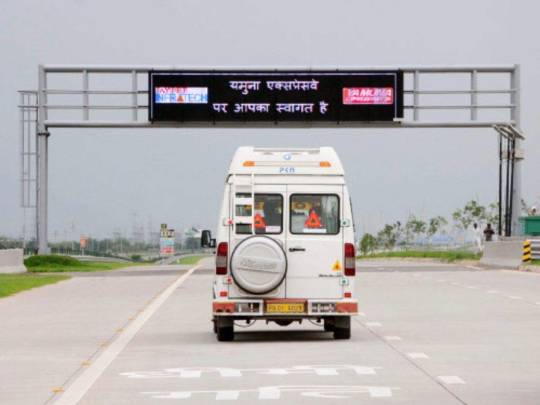
Two dead as car tyre bursts on Agra-Lucknow Expressway Circle Officer of Bangarmau Anjani Kumar Rai said the deceased were identified as Meera Devi (53) and Jaiprakash (40), both residents of Samastipur district in Bihar. Source link
#Agra-Lucknow expressway#Agra-Lucknow expressway accident#Car accident#car tyre burst#Deaths#highway accident#kanpur city news#Kanpur latest news#Kanpur news#Kanpur news live#Kanpur news today#Today news Kanpur#unnao#uttar pradesh
0 notes
Text
Unnao NNews: उन्नाव में बढ़ा गंगा का जल स्तर, तीन गांव में घुसा गंगा का पानी जलमग्न हुई सड़के-
youtube
#unnao news today#unnao news hindi#unnao news aaj ki#unnao news channel#unnao news video#unnao news#up news today#up crime news#up news in hindi#up news in today#up news hindi#up top news of the day#Uttar Pradesh News#Uttar Pradesh Latest News#up latest news#up news#यूपी न्यूज़#यूपी लेटेस्ट न्यूज़#यूपी क्राइम न्यूज़#उत्तर प्रदेश न्यूज़#उत्तर प्रदेश लेटेस्ट न्यूज़#Youtube
0 notes
Photo
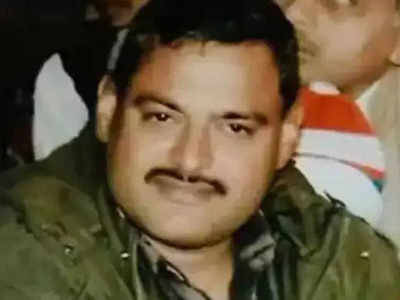
UP: Where’s Vikas Dubey? Vigil at Unnao, Lakhimpur Kheri | Lucknow News – Times of India A high alert has been sounded along districts bordering Nepal to stop the elusive gangster Vikas Dubey from f...Read More…
#lakhimpur kheri#Lakhimpur Kheri district#Lucknow latest news#Lucknow news#Lucknow news live#Lucknow news today#Policemen#Special Task Force#Today news Lucknow#Unnao district
0 notes
Text
Latest News Today - IAS Officer Thrashes Journalist In Public During UP
Latest News Today – IAS Officer Thrashes Journalist In Public During UP
The IAS officer beat the reporter in public in Uttar Pradesh’s Unnao.
Lucknow:
In one of the more incredible scenes to emerge from the local elections held in Uttar Pradesh on Saturday, an Indian Administrative Service (IAS) officer was caught on camera chasing down a TV reporter in public and beating him viciously.
Divyanshu Patel, the Chief Development Officer or CDO of Unnao, is accused of…
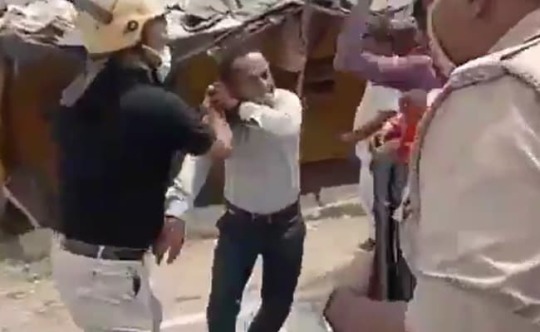
View On WordPress
0 notes
Text
Breaking News Live, Latest Updates February 21
Breaking News Live, Latest Updates February 21
Image Source : INDIA TV
Breaking News February 21
Daily dose of news plays a very important role in our daily life. For some people, the morning is incomplete without knowing what’s happening across the world. Some digital-savvy people have a habit of consuming news even when they are travelling or in their free time. In today’s world, where people rely on news websites for everything that’s…

View On WordPress
#Breaking news#breaking news today#Chamoli glacier tapovan tunnel rescue#coronavirus#coronavirus vaccine#covid19#covid19 vaccine#diesel#farm laws#farmer protest#farmer protest live updates#Fuel price#Petrol#pm modi#Unnao dalit girls murder case#Unnao murder case#uttarakhand#west bengal assembly polls#west bengal polls
0 notes
Text
Unnao case: CBI wants 1 IAS, 3 IPS officers punished | India News
Unnao case: CBI wants 1 IAS, 3 IPS officers punished | India News
[ad_1]
LUCKNOW: The CBI, which probed the 2017 Unnao rape case in which the then MLA from UP’s Bangarmau, Kuldeep Singh Sengar, was convicted and jailed for life, has now recommended action against one IAS and three IPS officers who had been posted in the district.
The CBI has stated these officers, including a former Unnao DM and two SPs, ignored the matter when it was reported to them by the…
View On WordPress
0 notes
Text
Tales from an Indian crematorium
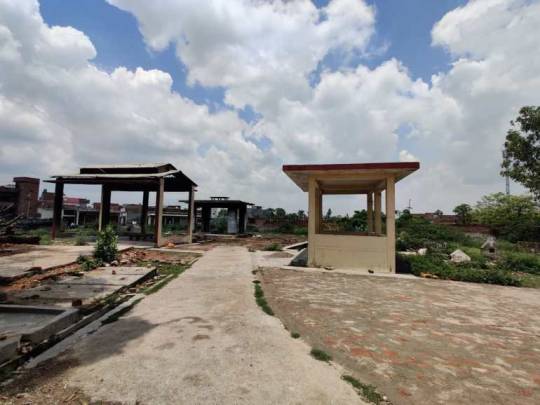
Listen to this story:Lucknow, Uttar Pradesh – Deen Dayal Verma has never burned as many bodies as he has this year.
Sitting under the shade of a cement roof at a crematorium in Barabanki city, the 55-year-old who has been a crematorium worker for the past six years, says with a wry smile: “Actually, no dead body has come today. Has COVID-19 come to an end or are the bodies being taken to other crematoriums?”
In India, where cremation on a funeral pyre made from wood has long been part of an elaborate ritual to honour the dead, the religious significance of laying the dead to rest has been all but abandoned as the bodies stack up during the second deadly wave of COVID.
As Deen Dayal waits for the work to come in, he puffs on a bidi (a mini-cigar filled with tobacco flakes and wrapped in a tendu leaf tied with string).
“I have not kept count of the bodies, but in April and May, I worked from 5 in the morning until midnight every day. I think I would have lit more than 100 funeral pyres in April alone. There has been no end to the dead bodies coming to this crematorium,” he says. “Before the second wave of COVID-19, three to four dead bodies used to come in per week.”

The Barabanki crematorium, where Deen Dayal Verma works. Barabanki is 30km (19 miles) east of the Uttar Pradesh state capital of Lucknow. Uttar Pradesh is India’s most populous state Deen Dayal is the only person still working at this crematorium. He has a small, two-room house allocated to him on the site, where he lives with three of his children – his elder daughter, Soni, 14, takes care of her two younger brothers during the day. His wife has returned to the family home in a village 48km (30 miles) away, where his other four children remain, but Deen Dayal has not visited for two months for fear of passing the virus on to others.
The crematorium has become so busy that Deen Dayal says he no longer waits for the municipal cleaner to arrive each morning – he gets on and does it himself so that families will not have to wait around for the crematorium to be ready.
“Over the last two months, the workload has increased so much that I have now developed a habit of waking up early. I don’t want to make people wait with the dead body; I do not feel good for people waiting with the dead bodies for their turn for the cremation.”
The state of Uttar Pradesh, which is more populous than Brazil, has been the worst affected in India during the second wave of COVID, with people struggling to obtain oxygen, hospital admissions and healthcare. The state has recorded more than 20,787 deaths, with thousands more thought to have gone unreported due to the lack of proper COVID testing. As of June 3, India had officially recorded 337,787 deaths.

Deen Dayal Verma, a crematorium worker, sits outside the two-room lodgings he shares with three of his children. He remains outside the house at all times
‘Family members refuse to touch the bodies’
The once highly respectful ritual of cremating family members has undergone a huge shift as a result of the pandemic, says Deen Dayal.
Before, cremations were an important cultural custom in the Hindu faith. People came in large numbers to pay their respects to the dead before the body was placed on a funeral pyre and burned. According to Hindu scripture, “just as old clothes are cast off and new ones worn, the soul leaves the body after death and enters a new one”. Hindus believe that burning the dead body and, hence, destroying it, helps the departed soul get over any residual attachment it may have developed for the deceased person.
“Earlier, cremations were performed with the utmost respect but now for many of the families, it has become a burden. In many cases, funerals have been reduced to just getting rid of the dead body because people are very scared of contracting the virus,” he explains.
“Many times, family members refuse to touch the dead body, and in many cases the family members insist that I only show them the face once before lighting the pyre, so they can pay their last respects.”
Deen Dayal has never been tested for COVID, nor has he been vaccinated. He has no personal protective equipment (PPE). All he has been given by the local municipal government which oversees the crematorium is a “Corona prevention kit”, containing vitamin C tablets, zinc tablets and five days worth of an anti-parasitic drug.
“I listen to everyone. I wear a mask and gloves, use a sanitiser, although I know that is not enough, but I do not have any other option,” he says.

Deen Dayal Verma outside the crematorium lodgings he shares with his daughter, Soni, 14 and two younger sons. His six-year-old son, Sunny, fractured his wrist while playing with his siblings For the cremation of each dead body, Deen Dayal is paid Rs 500 (about $7) and he asks the family to provide gloves, masks and sanitiser.
His family is terrified by his job – he speaks to his wife and other four children by telephone as often as possible. “There are nine people in my family (himself, his wife and seven children) and they all are very scared of the COVID situation. They keep asking me to stop doing this work but if I stop setting up and lighting the pyres, then who will do it and what will I do? The only work I know is this. If I stop doing it, how will I feed the family?” he asks.
“I try to take precautions to keep myself away from the infection but this is a very risky job. I have to do it because I want to treat every dead body with the utmost respect, otherwise I will not be able to face God when I die.”
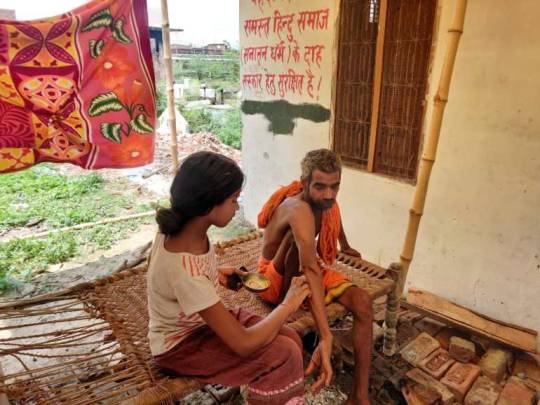
Soni applies oil to her father’s arm outside the family house in Uttar Pradesh
‘I see him crying at night’
Deen Dayal’s 14-year-old daughter, Soni, says that the family back in their home village will not allow him to visit for at least four days after cremating a dead body these days – so there is little point in him making the 48km (30-mile) journey there every Tuesday as he used to do. At their lodgings on the crematorium site, he must remain outside at all times.
“To answer nature’s calls he goes out in the fields and does not use the toilet we have access to. He eats and sleeps outside and sometimes he gets irritated when he cannot play with my younger brothers.
“I have seen him cry at night but he never mentions the reason behind it.
“We all know that he misses us a lot and we also miss him. It has been months we have gone out with him in the evening to the markets to eat samosa and do grocery shopping. We miss the bedtime stories about the Gods he used to tell us.”
Soni does her best to care for her younger brothers while her father is working, but it is not easy. One of them – six-year-old Sunny – fractured his wrist while playing.
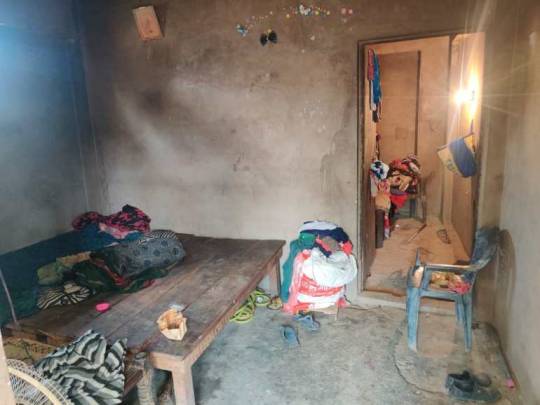
Inside the lodgings at the crematorium where Deen Dayal lives with three of his children Back at the family home, his wife and eldest daughter work as domestic help in nearby houses, earning about $130 per month. They say this is enough to feed the family. There is no gas connection to either that home or the crematorium lodgings, so the family uses firewood to cook.
“We tried very hard to convince our father to return to our native village and not do the cremation work but he is adamant,” says a frustrated Soni. “He did not listen to us and is still doing the work despite knowing the large number of people dying from COVID.
“My mother has had arguments with him, but he has never paid any importance to what we were saying. My father has also developed a drinking habit and in the past, he had liver problems, so we are extremely worried for him.”
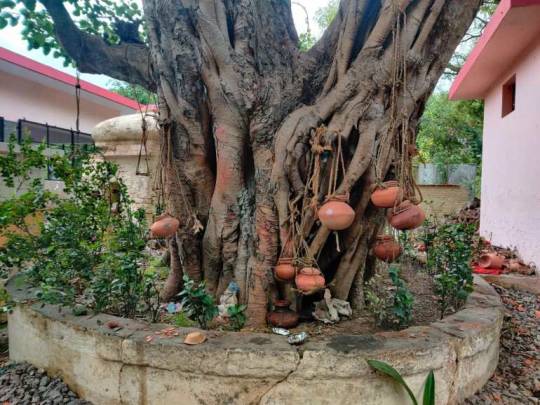
Earthenware pots containing the ashes of the dead hang on a tree outside the crematorium in Belai, close to the Ganges river
‘I have to do the job of the priest’
In Belai Ghat, on the banks of the holy Ganges river in Belai, Unnao, Uttar Pradesh, about 64km (40 miles) north of Lucknow, Ankit Dwivedi is telling someone over the phone to make sure the body they have is tightly wrapped in a plastic sheet if they want him to perform a cremation.
These days, with some priests afraid to oversee cremations due to the pandemic, the 23-year-old crematorium worker also performs their duties. Although he is not a priest and has received no training, it is Ankit who now quickly recites the funeral hymns before lighting a body.
“A lot of people are dying and no one knows the reason ,” he says. “There are high chances of COVID being behind this sudden surge in deaths so to protect myself, I have been asking everyone to wrap the dead bodies in a plastic sheet before they come to the ghats .”
In more normal times, this is a deeply holy site – the Ganges river is considered the holiest in India. After bodies are cremated, family members bring the ashes from the nearby crematorium to place in the river, in the belief that the soul of the dead person will be cleansed by the waters.
Now, because crematoriums cannot keep up with the workload, Ankit says, more and more families have taken to burying the dead – once considered unacceptable in the Hindu religion. There is no other choice – the crematoriums are full and people have to get rid of dead bodies quickly because of the risk of infection and the social stigma attached to those who have died from COVID.
“This COVID disease has changed a lot of things. People now want to bury their dead ones if they can’t get the cremation done as fast as possible. The reasons behind it are both poverty and fear of COVID,” Ankit says.
“Before the pandemic, 10 to 12 cremations were being performed at this ghat each week but in the months of April and May I have performed at least 25 cremations every week and never in my life have I seen such a large number of deaths. I pray to God to not show us a similar situation ever again.”

Ankit Dwivedi, 23, pictured outside the house he shares with his parents and older brother in Belai, near the Ganges river where he is a cremation worker Every day is the same for Ankit. “I wake up at around 5.30am and then I reach the river bank by 6am. I stay there all day and eat whatever I get from the people who bring dead bodies with them or else I buy cucumber, watermelon and other things that are grown on the river bank.
“Before the pandemic, I used to pedal myself home on my bicycle in the afternoon for lunch but the situation is not the same now. I have isolated myself as I do not want to harm my family by carrying any kind of infection with me. My parents are older and I fear for them. My stuff has been separated by the family and my dinner is placed outside my room before I reach home.”
Once he is there, he remains isolated in his own room, and no one else is allowed to enter.
Ankit comes from a family of cremation workers. They have been in the funeral business for more than five decades. They have also studied the Sanskrit language, so that they can learn about the cremation rituals in Hinduism.
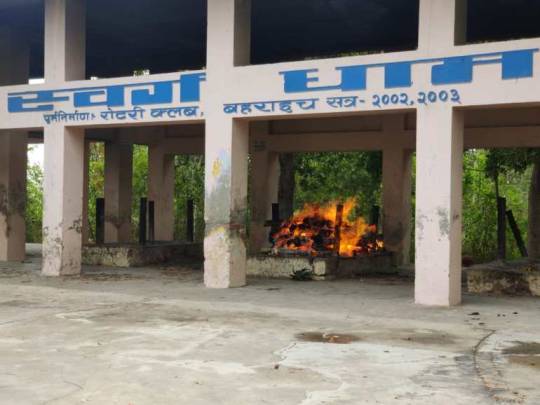
A funeral pyre burns at the Bahriach crematorium close to the shore of the Ganges river in Belai, Unnao He used to have a busy life outside of work – but no longer. “Now I cannot even meet my friends or go to play cricket with them. All I do is perform the cremations, eat, sleep and repeat. This has been my routine on loop for the last two months and there is nothing else happening in my life.
“All I care about these days is my stock of face masks and sanitiser because these are the only things that are going to save me from COVID and my family will be safe only if I am safe,” says Ankit.
“I had a habit of massaging my parents’ feet every night before going to bed but now I keep a distance of 10 feet when I am with my mother and only have contact with my father when he comes to leave me my tea early in the morning. This is a really sad feeling because there is no life without family and if this pandemic does not come to an end, then I am sure I will either slip into depression or die from the isolation.”
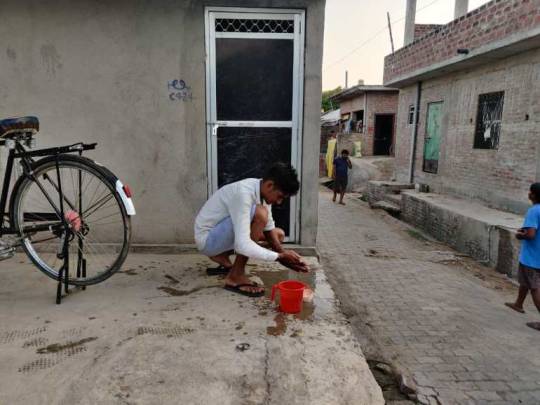
Ankit washes his hands carefully after work before entering the family home
‘I feel like a vulture who feeds on dead bodies’
The one “bonus” is that Ankit, the sole breadwinner in the household, is earning a good deal more money. The standard fee of Rs 500 ($7) per body he cremates has risen to Rs 2,000 ($28). But the family finds little joy in this.
“Performing cremations is our family business but now I feel like a vulture who feeds on dead bodies,” says Ankit’s father, 50-year-old Vipin Bihari, who has retired from funeral work. “I have never seen such a large number of deaths in my life and my son has to see and work in this unfortunate situation. Our family never thought of changing the profession but now I feel like our kids should do something else.”
Dismayed by the prospect of the family remaining in the cremation business, Vipin says he is considering opening a grocery shop nearby which he can pass on to his children instead.
He adds that his wife desperately misses their son even though he is living in the next room. “Every night my wife asks me to stop Ankit from going to the river bank and performing the cremations but if he stops doing this then what else will we do to earn our bread and butter? She cries, she fights with me. She fights with Ankit too but consoles herself watching the family and understanding that Ankit is the sole breadwinner now. We do not own land and our elder son is sick so all the burden of earning is on Ankit only.”

Ankit reads alone in his room at the family home. He must stay separated from the rest of his family in case has contracts COVID during his work at a crematorium Ankit says he feels “like I am cheating my religion because people are burying more dead bodies and not burning them as per the religious rituals but what more can I do?
“As my father says, ‘we are no more than vultures’. We feed on dead bodies. The more dead bodies, the more money but no one pays us happily. A lot of time I feel that this money is even worse than begging but this is my life and I accept it the way it is.”
Read the full article
0 notes
Text
আরো মৃতদেহ পাওয়া গেল উত্তর প্রদেশের উন্নাও তে, মৃতদেহগুলি গঙ্গার পাড়ের বালিতে কবর দেয়া অবস্হায় পাওয়া গেল।
উত্তর প্রদেশেরই বক্সারে আরো ভাসমান মৃতদেহ পাওয়া যাওয়ায় স্থানীয় মানুষজন আতঙ্কে ভুগছেন।
অন্যদিকে তামিলনাড়ুর কোয়েম্বাটোরে রেসিডেন্সিয়াল বিল্ডিংয়ের পাশেই শবদেহ পুড়তে দেখে আতঙ্ক ছড়িয়েছে স্থানীয় বাসিন্দাদের মধ্যে।
উত্তর প্রদেশ ও অন্যান্য রাজ্য থেকে নদী দিয়ে ভেসে আসা মৃতদেহ পশ্চিমবঙ্গে ঢোকার আগেই আটকানোর জন্য পর্যাপ্ত ব্যবস্থা নেয়া হয়েছে বলে আশ্বাস দিয়েছে পশ্চিমবঙ্গ সরকার ও প্রশাসন।
More Human dead bodies found buried in Madhya Pradesh's Unnao Ganga( Ganges ) riverbank sand.
As more bodies being discovered and recovery in progess in Buxer, Uttar Pradesh.. locals are worried and scared.
In Coimbatore, Tamilnadu locals found burning fire & burial/cremation ongoing near Residential buildings in a residencial area. Locals are worried upon discovery.
West Bengal Government and Authorities today gave assurance to the public that they've taken appropriate measures to stop any floating human dead bodies entering West Bengal from other states through rivers.
https://timesofindia.indiatimes.com/videos/city/chennai/coimbatore-locals-raise-alarm-over-open-burial-of-covid-bodies-close-to-residential-area/videoshow/82595862.cms?from=mdr
https://indianexpress.com/article/india/corpses-in-ganga-buxar-locals-bihar-covid-7312478/lite/
https://www.ndtv.com/india-news/bodies-found-buried-in-sand-by-ganga-river-in-uttar-pradeshs-unnao-2440517?amp=1&akamai-rum=off
https://www.hindustantimes.com/india-news/bodies-found-buried-in-sand-near-ganga-in-uttar-pradesh-s-unnao-101620893824088-amp.html
0 notes
Link
As India slowly wakes up to the horrors that were inflicted on eight-year-old Asifa Bano in January, collective outrage is gathering steam. New hashtags are trending every day. Horrifying details about the crime are emerging to shake us out of our consciousness. Armchair activists are leading the shout to get justice for Asifa.
Rightly so. It is impossible not to be moved to tears after reading the terrible details about the Kathua rape case. From being drugged, to being gangraped by men who wanted to ‘satisfy their lust’, to being strangled and bludgeoned to death in two horrific attempts, to her tiny withered body being dumped in a forest, Asifa was treated to inhumanity that is unimaginable. Like many others, I am also walking through my days unable to shake off her brutalised face. How can our nation produce such depraved souls? And how can they be protected under the guise of religion and nationalism? How did we go from #BetiBachao (save our daughters) to #BalatkariKoBachao (save our rapists)? Today, we are seeing the true face of India and it is ugly.

Protesters demand justice for Asifa. PTI Photo
But what is even more disgusting is to call Asifa 'the new Nirbhaya'. Why? Because it shows us that we haven’t learnt our lesson. We haven’t had enough. We haven’t changed. When we call another rape victim by the name of India’s most brutalised rape victim, it shows us that we’ve made peace with the brutality of rape and with what happens to its victims. How can we reduce the victim of rape to a moniker?
When the Supreme Court awarded a well-deserved death sentence to the four convicts who brutally raped, mutilated and murdered 23-year-old Jyoti Singh Pandey, we called it a ‘day of victory’ for India. The death sentence was supposed to send a strong message to rapists and perpetrators of sexual violence. It was supposed to stop them from committing further heinous crimes. It was supposed to set a precedent for India. It was supposed to demonstrate that India could protect its sisters, daughters and mothers in a dignified and fair manner. It was supposed to be the beginning of justice, equality and safety to all the women in our country.
But, did it? Look at where we are now. Back to square one. Where is the change? There is none. It would appear that Jyoti Singh’s verdict has taught us nothing. Our candle marches, our protests, our outrage, has come to nothing. The relentless work of selfless activists, lawyers, citizens, and NGOs, who fought long and hard to ensure justice, has meant nothing.
Because today we are still seeing incidents like Kathua and Unnao. We are still reading about horrific cases like Rohtak, Jisha, Bilkis Bano, among many others.
Because we really haven’t had enough, have we?
We read incidents of rape every single day; obviously because a woman is raped every 20 minutes in our country. Yet, we react only when the rape is grossly heinous. Our anger is as cheap as our lives. As a nation, we’ve become desensitised to rape. We still need gross human violations to have our collective conscience shaken. We still need brutality to be inhumane for us to realise our humanity. We quantify rape as ‘good rape’ and ‘bad rape’ and make time only for the rarest of rare cases and the most brutal of brutal crimes. We forget that rape is rape, and should be met with revolt, no matter what the severity.
In Saudi Arabia, they behead men for rape. In China, they castrate men. In North Korea, it’s the firing squad. And we — the rape capital of the world — just seem to love our rapists. We are lenient with the way we punish them. Our great ‘Anti Rape Bill’ requires proving offense beyond a reasonable doubt, while giving the accused the benefit of doubt. We do not have effective laws; they exist but are not implemented, like the POCSO Act. We have a low rate of conviction. We do not use stringent punishment. We even fight against capital punishment for men who treat the lives of women as flimsy. We do not use fast track courts. We have only one judge for every one lakh people. Our schemes help women in distress after the crime is over, not to prevent crime. Knowing all this, the rapists take a chance. They continue raping, because they know there’s a bigger probability that they’ll walk away scot-free than be indicted. If there’s no punishment to a crime, why will the criminal stop?
More so, we glorify rapists by saying ‘boys will be boys’. When Mulayam Singh Yadav says ‘boys make mistakes’, when Abu Azmi says ‘even women are guilty (of being raped)’, when ML Sharma says ‘there is no place for women in our culture’, we make them household names instead of punishing them for incitation. We normalise rape in our culture. Bade bade deshon mein aaisi choti choti baatein ... hoti rehti hai, right? (Small squabbles happen in big countries).
This subversion is demonstrative in the new video by The Quint where we see the cavalier attitude of men and women, boys and girls, about rape. From saying it is consensual to saying ‘ek haath se taali nahin bajti’ to saying that girls are responsible for getting raped, it shows us the pervasive attitude in Haryana about rape. We’ve made it a ‘culture’. And, no. This is not about Haryana. Or Uttar Pradesh or Jammu and Kashmir. This is not about Hindu rape or Muslim rape. This is not even about the BJP or Congress. This is about what we've become. Nothing but animals. Because we continue to make women the repositories of shame in these matters. Because it is women who remain victims even after so-called justice has been delivered. Because the extent of violence and inhumanity of sexual assaults against women is not only continuing, it is increasing.
So what about Nirbhaya is there to really be proud of? Yes, the December 2012 case was considered a landmark verdict, the second of its kind in India after the Shakti Mills gangrape case. Yes, it provided retribution not just to the rape victim but also to our nation’s outraged citizens. Yet, one of Jyoti Singh Pandey’s rapists, the juvenile who allegedly inflicted the most serious wounds, is now free. We haven’t even put to use the Rs 3,000-crore Nirbhaya Fund to improve the safety and dignity of our women. Isn’t justice delayed, justice denied? Clearly not enough has been done in the case for us to nonchalantly evoke 'Nirbhaya' again.
'Nirbhaya' means fearless. The only people who were fearless in Asifa’s case were the perpetrators — the rapists who did the crime and the police who covered up the crime. How can we equate the two? 'Nirbhaya' evokes dignity, at least in death if not in life. Let’s give Asifa that, in death if not in life, before we call her 'another Nirbhaya'. Let's scream and shout and protest until we get justice for Asifa. Let’s do that before we become dead as human beings. Let's do it before we fail all the women in our country.
Asifa is not 'the new Nirbhaya', because there should be no 'Nirbhaya'. Let’s never forget that.
The writer is an award-winning author, columnist, feminist and TEDx Speaker. She tweets @MeghnaPant
#asifa#asifa bano#rape#rape case#tw#trigger warning#graphic#india#nirbhaya#kashmir#misogyny#anti-Muslim bigotry#sexism#women's rights#feminism#rapists#rape culture#article#meghna pant#this will disturb me for a long time#I can't imagine the anguish her parents are going through#and the terror she must have experienced#this is level of violence is incomprehensible to me#this is why I left that shit hole country
7 notes
·
View notes